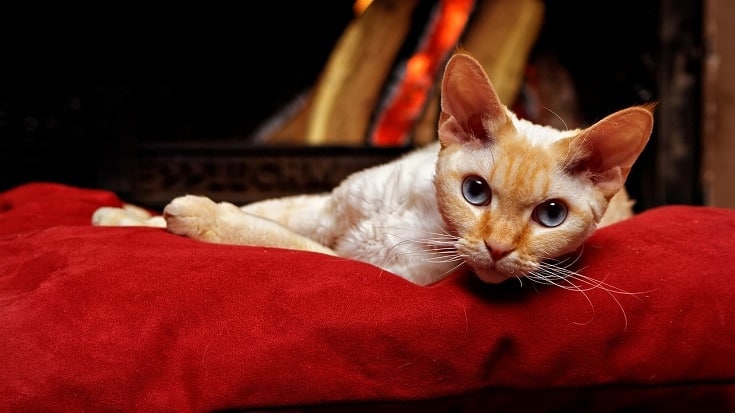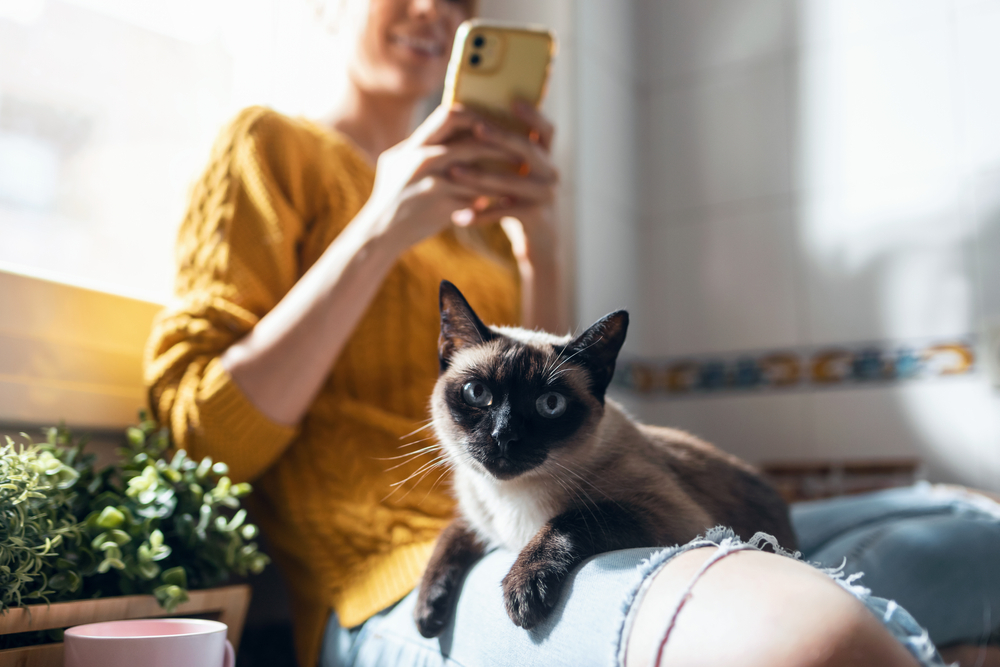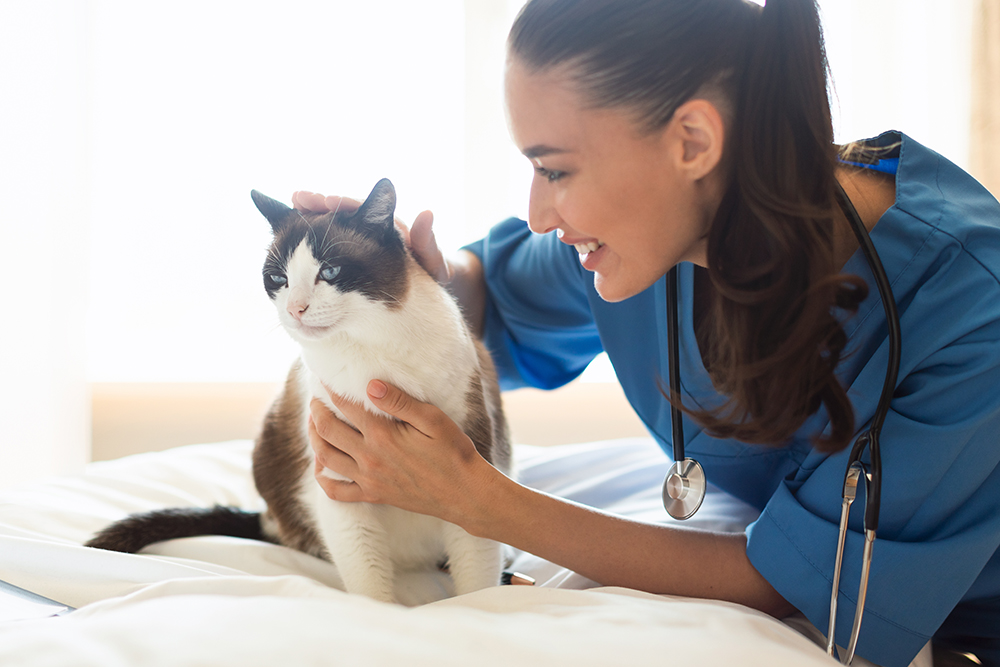There’s nothing quite as cozy and comfortable as snuggling up next to your fireplace during the chilly months of the year. However, if you’re a cat owner, there are some important safety considerations you need to factor in when your home is outfitted with a fireplace. Read on to find our tips on pet-proofing your fireplace so you can stay warm and keep your kitty safe all winter long.
The 15 Tips for Keeping Your Cat Safe Around the Fireplace
1. Train Your Pet
Cats don’t inherently understand that fireplaces can be dangerous. Their curiosity can get the better of them when they feel the warmth emanating from the fireplace, so they may try to get too close to capitalize on that coziness, potentially burning themselves or singeing their fur in the process. Not to mention, they can get hurt by the hot embers that can escape at any time if they spend too much time too close to the fire.
While training a cat to stay away from the fireplace is definitely easier said than done, it can be accomplished with patience, time, and plenty of yummy treats. Whenever you see your kitty getting a little too close to the fireplace, coax them away with toys or treats. Offer plenty of praise and make sure the treats you’re providing are of high value (something they really like that they don’t receive regularly).
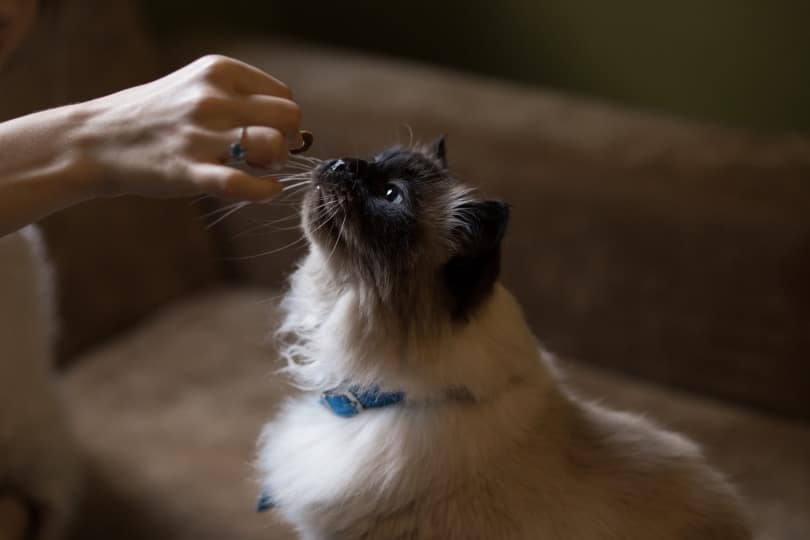
2. Supervise at All Times
Any fireplace owner should be able to tell you the number one safety tip with fire: never leave it unattended. This is especially important if you have pets or children. Even cats that have been trained to steer clear of the fireplace can forget the rules and get hurt.
3. Try Tin Foil
Some cat owners have had great luck training their cats to stay away from their countertops and cupboards by using tinfoil on top. You may wish to try this on top of your fireplace’s mantle to keep your pet off of there.

4. Use a Pet Gate
While pet gates are typically better suited for dogs than acrobatic cats, they can still provide some level of protection for your feline family members. You can try using the pet gate to block the doorway of the room with the fireplace. You can also find configurable gates and use them to set up a boundary around the fireplace area.
Just remember that most pet gates won’t be completely cat-proof unless your kitty is old or has problems getting around. Don’t use the gate as a substitute for proper supervision, and make sure it is set far enough away from the flames that it won’t catch fire.
5. Use the Glass Doors & Screen
Your fireplace should be outfitted with closing glass doors to keep the fire contained and prevent any sparks from flying out, as well as a mesh screen to keep embers away from your pets, family, and furniture.
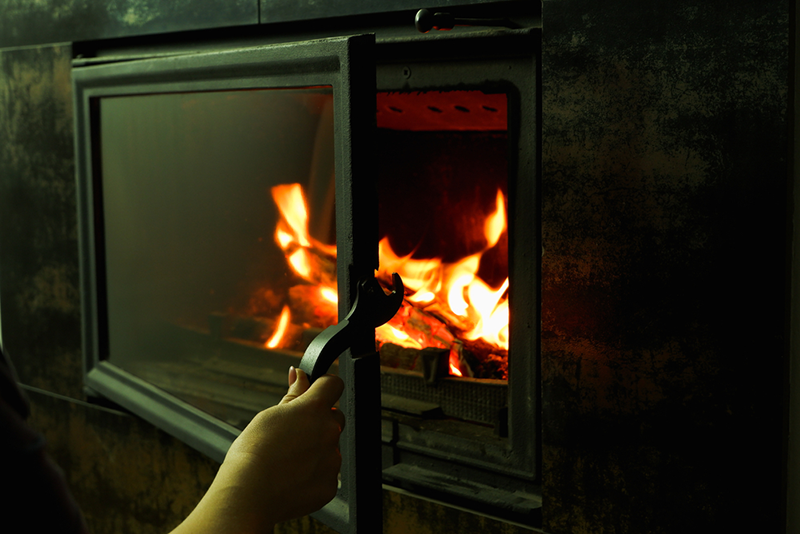
6. Store Your Tools Properly
The tools you’ll inevitably need to use for your fire, such as the pokers and tongs, can hurt your cat if they rub up on them or knock them over, or if they are hot from just being used in the fireplace. Invest in a sturdy and stable stand to house all your tools to ensure it won’t tip over and that your cat can’t get to them.
Other accessories you may need to use for your fireplace, like matches and starter chips, can be extremely harmful if ingested. These should be kept in drawers your kitty cannot access.
7. Don’t Play Near the Fire
As warm and cozy as it is near the fireplace, reserve your play sessions with your kitty far away from that area. Playing with balls or wand toys near the fireplace can be a recipe for disaster, especially when your pet gets carried away chasing their favorite toys.
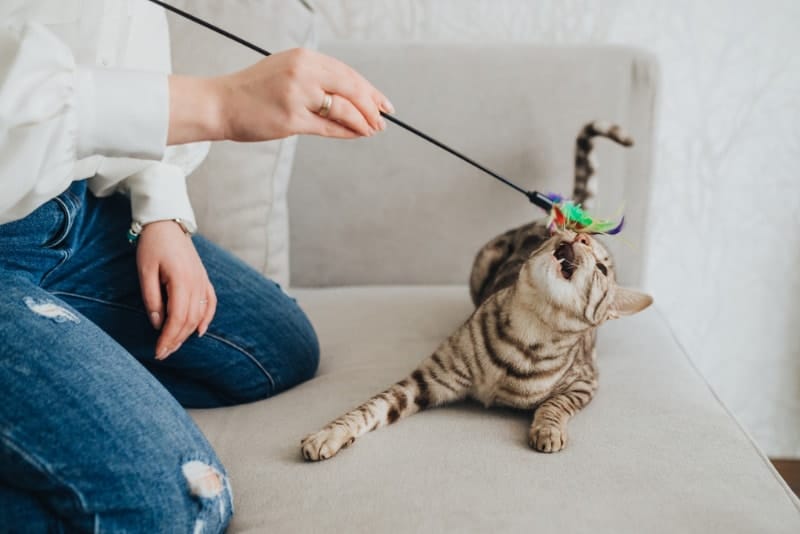
8. Put Their Bed at a Safe Distance
Placing your cat’s favorite bed within a safe distance from the fireplace is a surefire way to ensure your pet reaps the warmth from the fire that they seek while staying safe. You mustn’t place the bed too close, as it is likely very flammable.
9. Be Fireplace Smart
If you have a home with a fireplace you intend to use, it is your responsibility to take care of it properly and regularly for the health of your pets and your family.
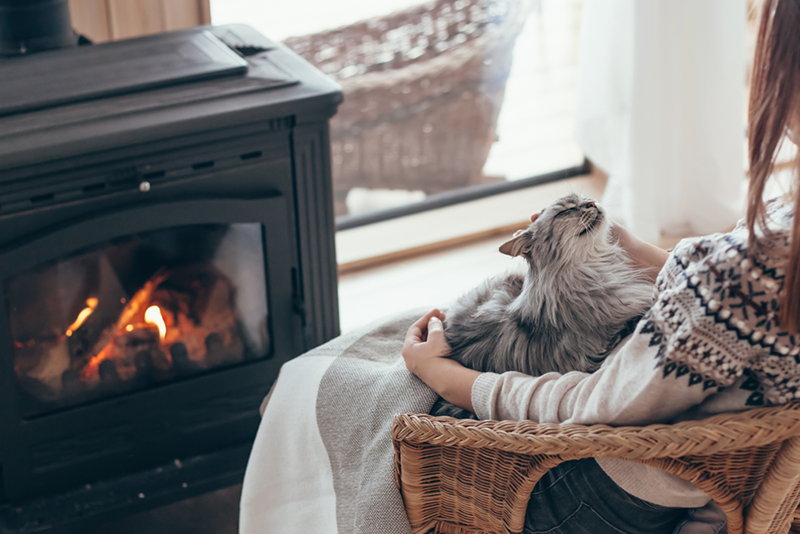
10. Be Smoke Smart
According to the U.S. Environmental Protection Agency, smoke from wood-burning stoves and fireplaces contains a harmful mixture of gases and particulate matter. When you and your cats breathe in these particles, they can set off respiratory issues, particularly if your cat is already suffering from one, such as feline asthma, and may increase your likelihood of developing serious respiratory illnesses. Be sure your damper is fully open to ensure less smoke enters your home.
11. Buy a Fire Extinguisher
Always have a fire extinguisher on hand and ensure you know how to use it. Have the extinguisher inspected regularly and keep it somewhere easily accessible in case of emergency.
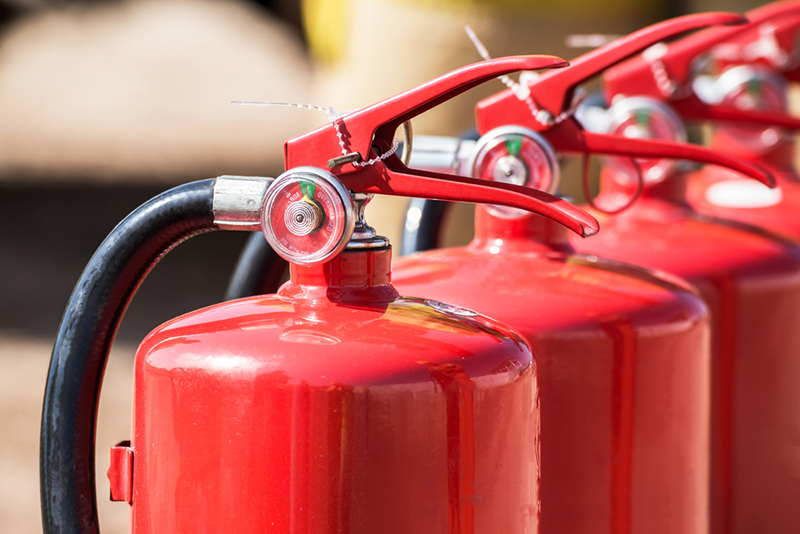
12. Keep Objects Away From the Fireplace
As tempting as it is to deck out your mantle with decor, this can be extremely dangerous. Decorations like tinsel and lights are popular to have during the holidays, but they can be very flammable. Keep all décor a safe distance from the fireplace.
13. Install Detectors
Carbon monoxide (CO) is a serious safety concern in homes with wood-burning fireplaces. High levels of CO can kill in minutes, so you must take all safety precautions to prevent poisoning your entire household.
Smoke and carbon monoxide detectors save lives. Do not operate your fireplace before you have these installed on every level in the home. We recommend opting for hardwired versions if possible.
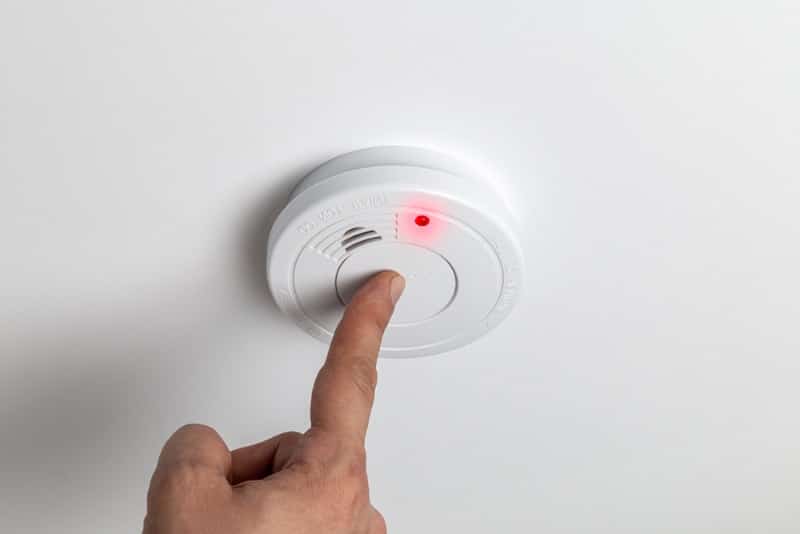
14. Prevent Creosote Build-Up
Creosote is a byproduct that can be released when you burn firewood. Most fires caused by fireplaces and chimneys are due to creosote build-up and could be prevented. To reduce creosote build-up:
- Burn properly seasoned or kiln-dried wood
- Ensure your fire has an adequate air supply (opening vents or windows)
- Get your chimney swept annually before the burning season
- Prime your flues before every fire
- Burn the right-sized fires
If you have a severe build-up of creosote, you may need to remove and replace your chimney lining.
15. Never Skip Annual Cleans and Inspections
Most experts recommend having your fireplaces, chimneys, and vents be inspected and cleaned at least once a year.
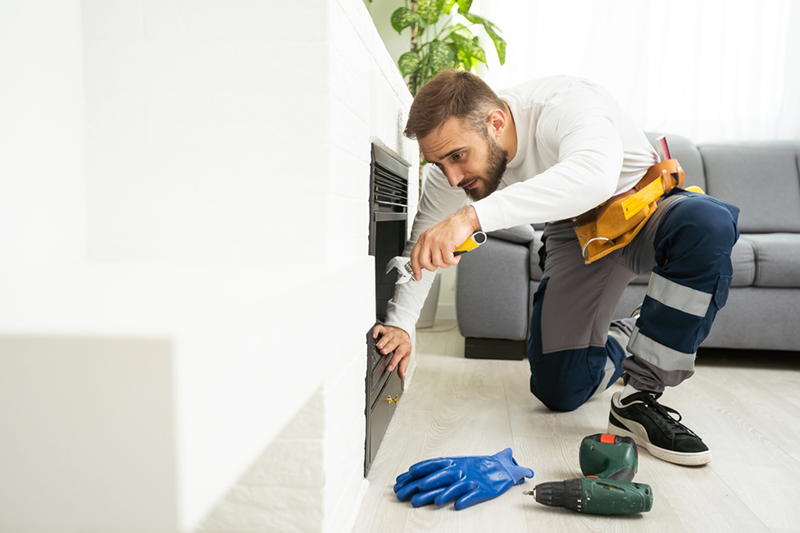
Final Thoughts
Fireplaces and cat ownership can go hand-in-hand, provided you know how to care for your fireplace properly and are willing to put in the work to ensure your pet doesn’t get too close to it. We hope our tips above have shed some light on the safety precautions you must take to operate your fireplace safely, for your sake and your pet’s, too.
See also:
- My Cat Is Addicted to Treats, What Can I Do? (Vet Answer)
- Seroma in Cats: Causes, Prevention, Signs & Treatment (Vet Answer)
Featured Image Credit: zkittler, Pixabay
Contents
- The 15 Tips for Keeping Your Cat Safe Around the Fireplace
- 1. Train Your Pet
- 2. Supervise at All Times
- 3. Try Tin Foil
- 4. Use a Pet Gate
- 5. Use the Glass Doors & Screen
- 6. Store Your Tools Properly
- 7. Don’t Play Near the Fire
- 8. Put Their Bed at a Safe Distance
- 9. Be Fireplace Smart
- 10. Be Smoke Smart
- 11. Buy a Fire Extinguisher
- 12. Keep Objects Away From the Fireplace
- 13. Install Detectors
- 14. Prevent Creosote Build-Up
- 15. Never Skip Annual Cleans and Inspections
- Final Thoughts

